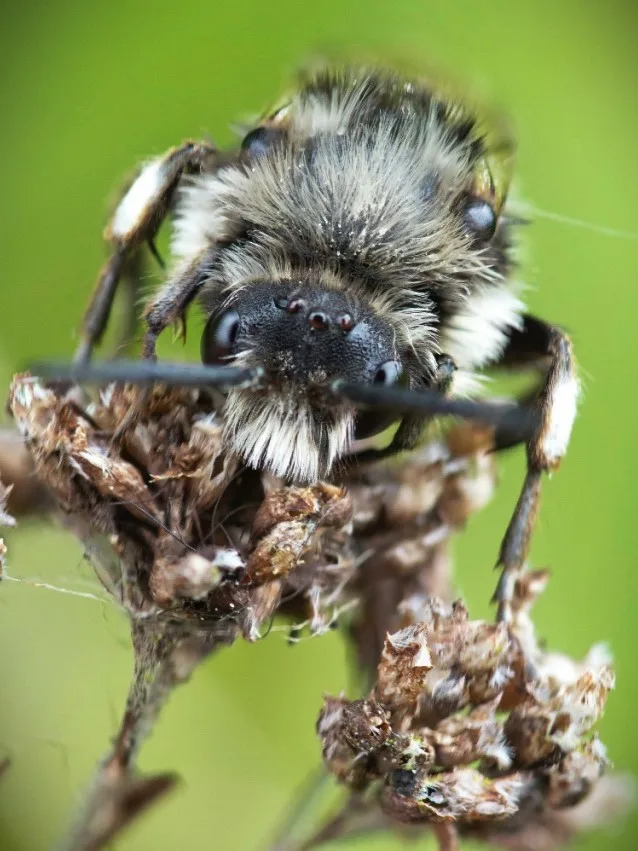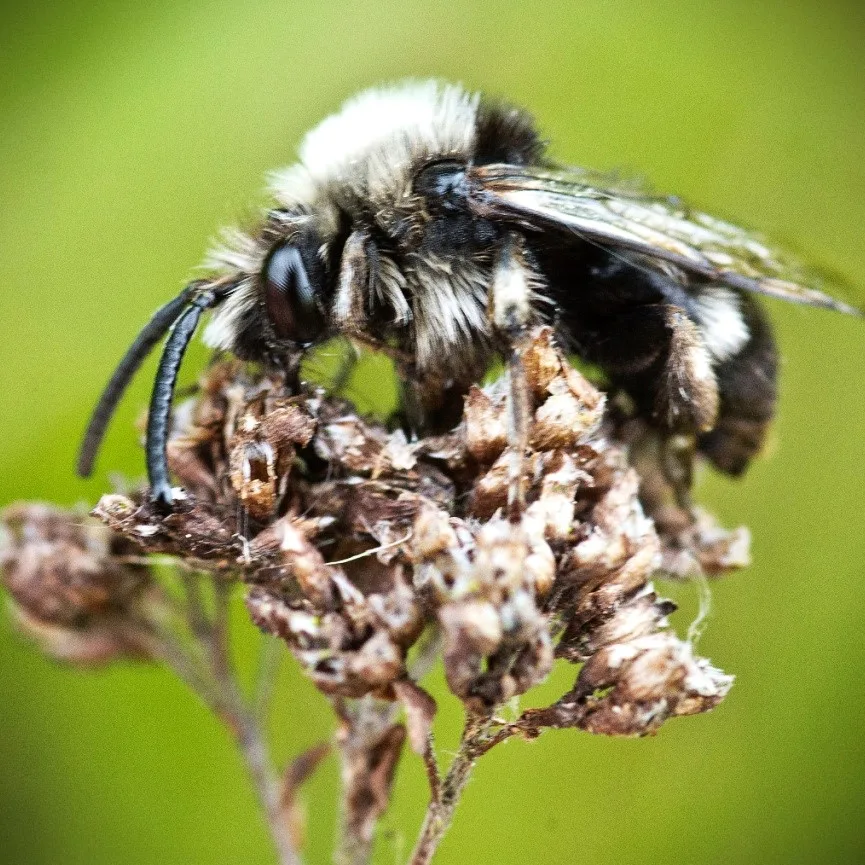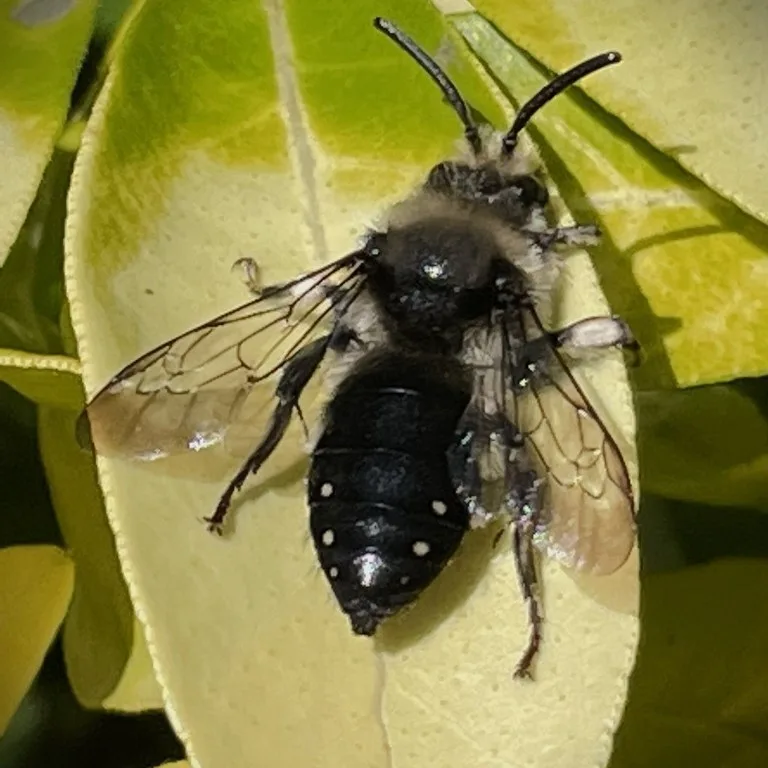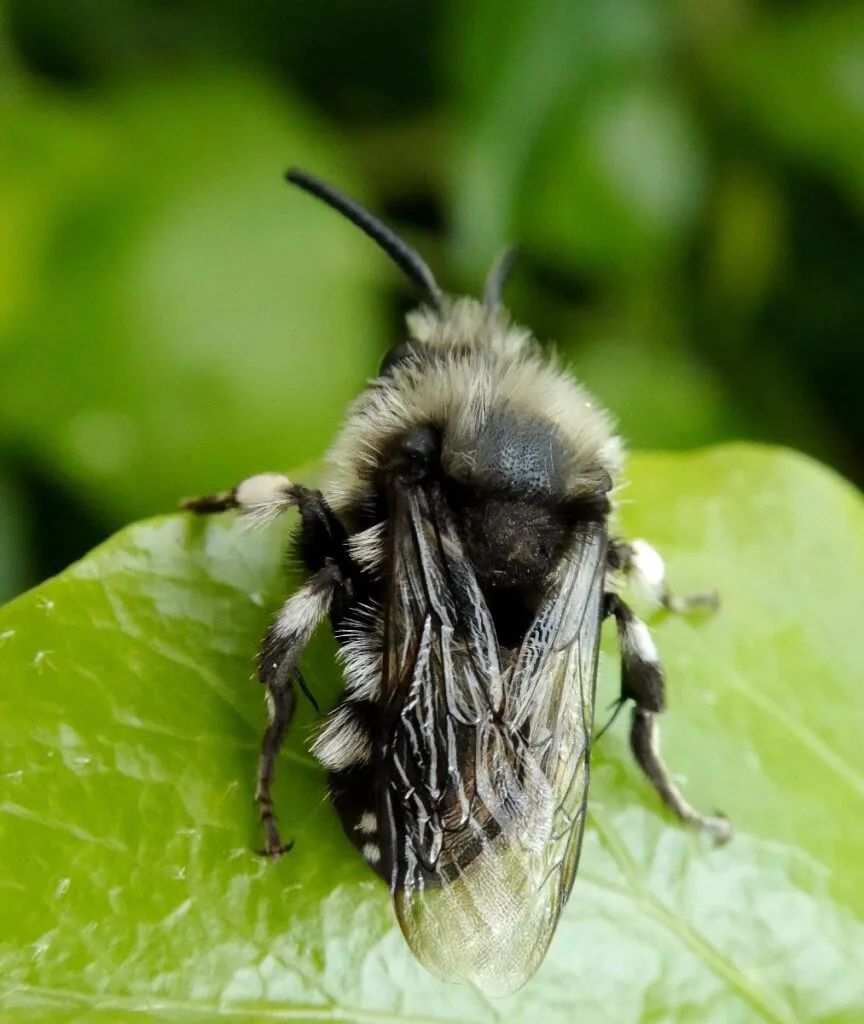Table of contents
Introduction
The Common Mourning Bee (Melecta albifrons) is a solitary bee species commonly found in the UK and Europe. Unlike most bees, it doesn’t collect pollen or build its own nest. Instead, it is a cleptoparasite, meaning it lays its eggs in the nests of other solitary bees, particularly the Hairy-footed Flower Bee (Anthophora plumipes). Although it doesn’t pollinate plants directly, it still plays a crucial role in maintaining bee population balance. Spotting one in your garden is a sign of a healthy ecosystem with thriving host species.

Common Mourning Bee Identification: How to Recognize Melecta albifrons
The Mourning Bee stands out with its compact, hairy body and distinct black and grey markings. Many people mistake it for a bumblebee due to its stocky build, but it lacks pollen-collecting structures. You’ll often see it hovering near Hairy-footed Flower Bee nests, looking for an opportunity to lay eggs.
Physical Characteristics
- Female: 10-14mm, black body with grey or white hair patches, no pollen baskets.
- Male: 8-12mm, slimmer than the female, with white markings on the face.
Identification & Key Facts
| Attribute | Details |
|---|---|
| Common Name | Mourning Bee / Melecta albifrons |
| Latin Name | Melecta albifrons |
| Size | 10-14mm (females), 8-12mm (males) |
| Location | Found across the UK and Europe |
| Active Months | February – July |
| Habitat | Prefers sandy or loose soil near host bee nests |
| Nesting Behavior | Cleptoparasitic – lays eggs in host nests |
| Social Behavior | Solitary |
| Flora & Fauna | Often seen near host species’ foraging sites |
| UK Status | Common but often overlooked |



Bees That Look Like the Mourning Bee
Because of its dark, hairy appearance, the Mourning Bee is often confused with other species. Here’s how to tell them apart:
- Hairy-footed Flower Bee (Anthophora plumipes) – The primary host species; larger, with orange or brown hairs on females and a faster flight pattern.
- Tawny Mining Bee (Andrena fulva) – Lives in similar habitats but has a bright orange body and does not parasitize other bees.
- Gooden’s Nomad Bee (Nomada goodeniana) – Another cleptoparasite, but with striking yellow and black wasp-like markings.
- Melecta luctuosa – A rarer close relative of Melecta albifrons with slightly different markings.
Read our Bee Identification Guide for more tips on distinguishing UK bee species.
The Ecological Role of the Common Mourning Bee
Although the Mourning Bee does not pollinate directly, it still plays an important role in the ecosystem. Since it relies on its host species to survive, its presence indicates a strong population of Hairy-footed Flower Bees. Understanding this species helps us gain deeper insight into pollinator health and biodiversity conservation.
How You Can Help Mourning Bees and Their Host Species
Healthy bee populations benefit both pollinators and cleptoparasitic species like the Mourning Bee. Here’s how you can support them:
🌿 Plant Bee-Friendly Flowers
- Support host bees (Anthophora plumipes) by growing nectar-rich plants like lungwort (Pulmonaria), dead-nettles (Lamium), and comfrey (Symphytum).
🚫 Avoid Harmful Pesticides
- Many insecticides harm bees and disrupt ecosystems. Instead, opt for organic gardening methods to keep pollinators safe.
🏡 Protect Nesting Sites
- Leave patches of sandy soil or bare ground where Hairy-footed Flower Bees build their nests. Providing suitable nesting areas helps maintain a stable bee population.
Frequently Asked Questions (FAQ)
What does the Common Mourning Bee look like?
The Mourning Bee has a compact, black body with grey or white hair patches. Males are slightly smaller and have white markings on their face.
Do Mourning Bees sting?
No, these bees are not aggressive and will only sting if handled roughly.
Are Mourning Bees pollinators?
Not in the traditional sense. Since they do not collect pollen, they don’t contribute to pollination the way other bees do. However, they may passively transfer small amounts of pollen when visiting flowers.
Where can I find Mourning Bees?
You’ll most likely spot them in gardens, urban areas, and sandy or clay-based soils, especially near Hairy-footed Flower Bee nesting sites.
How rare is the Mourning Bee?
Although not as well-known as other bee species, Melecta albifrons is fairly common in the UK and Europe.
Is the Common Mourning Bee dangerous?
No, it is harmless to humans and does not damage gardens or structures.
How can I attract more solitary bees to my garden?
Plant a variety of nectar-rich flowers, leave undisturbed soil patches for nesting, and avoid using chemical pesticides.
You can support pollinators like the Common Mourning Bee by creating a bee-friendly garden—check out WWF’s tips on how to help bees for simple and effective ways to make a difference.





